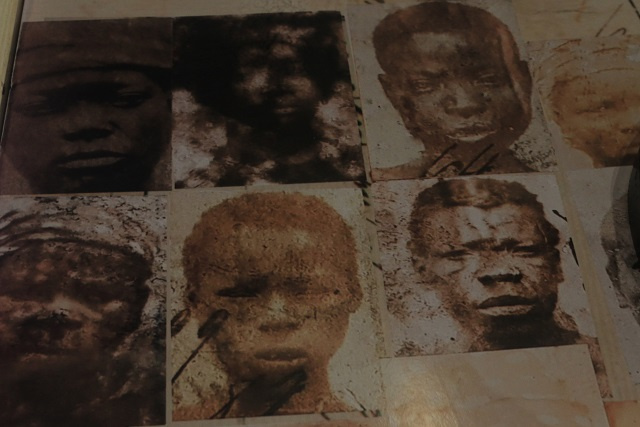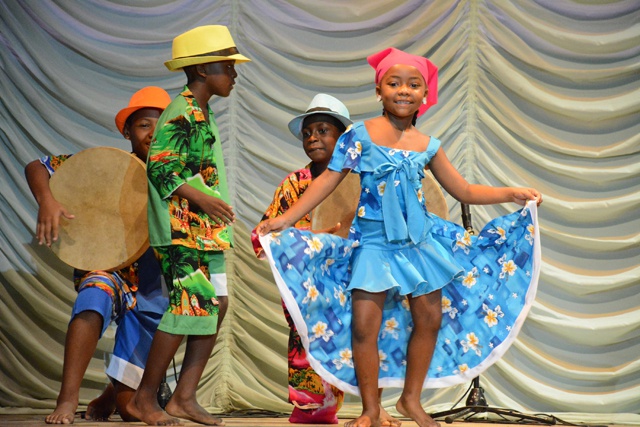Seychelles at 250: Liberated slaves in Seychelles and the birth of the Creole identity
Victoria, Seychelles | February 29, 2020, Saturday @ 08:30 in National | By: Sharon Ernesta and Tony Mathiot | Views: 21058

They were the seven slaves among the first 28 settlers who arrived on board the Telemaque on August 27, 1770. (Joe Laurence, Seychelles News Agency)
Their names were Miguel, Fernand, Ignace, Le Villers, Maladore, Maganga, and Marie - the only woman in the group. They were the seven slaves among the first 28 settlers who arrived on board the Telemaque on August 27, 1770, and they established the first settlement on the inner island of Ste. Anne.
The faces of those original settler's slaves are today reflected in the faces of the Seychellois people, also known as Creoles.
As the island nation celebrates its 250th anniversary this year, SNA looks at slavery in Seychelles and how the island nation became the cradle of the Creole identity.
It is often said that the Seychellois people are a melting pot of races. Indeed, this rightly describes the composition of the creole nation. The people of Seychelles represent an ethnic diversity that dates from the second half of the 18th century.
After the creation of the settlement L’Etablissement Du Roi” on Mahe in 1778, the French settlers brought more slaves from Reunion – today still a French department in the Indian Ocean - to establish the foundations of the islands’ plantation economy which at that time was cotton and coconut.
 |
| Slaves came from West and Central Africa - formerly Zaire - now the Democratic Republic of Congo – and the south-eastern coast of Africa - Mozambique and Madagascar. (National Archives) Photo License: All Rights Reserved |
As from the 1780s, hundreds of slaves kept arriving each year to our shores. They came from West and Central Africa - formerly Zaire - now the Democratic Republic of Congo – and the south-eastern coast of Africa - Mozambique and Madagascar.
Since many white settlers were bachelors, they took slave concubines with whom they had children. Consequently, census records show that in 1811, the year that the French administration ended in Seychelles, there were 135 Creoles among the population of about 4,000 inhabitants.
According to local historian Tony Mathiot, records show that the first person to be born in Seychelles was a man named Jean-Pierre Le Beuze in 1780 although he believes that there may be others born before that date.
“The Creole nation started to form in 1810 when the first ‘metisse’ child was born. They would often be the offspring of white leaders and their slaves. The child once born would automatically be white man’s custody, they would receive the father’s name and would be part of the inheritance,” explained Mathiot adding that “Pierre Hangard is one French known to have a property at Pointe Conan in the north of Mahe, who had a black partner.”
 |
| The Creole nation started to form in 1810. (Seychelles News Agency) Photo License: CC-BY |
In 1835, when the abolition of slavery came into force in all British colonies, 6,521 slaves were set free from a population of 7,500 inhabitants. This means that the population of Seychelles – 115 islands in the western Indian Ocean - then must have been predominantly black. There were 2,231 Creoles, 3,924 Mozambiquans, 282 Malagasy and 38 Indians.
The act of Emancipation did not put an end to the lucrative slave trade that thrived in Zanzibar which was a notorious slave market. Arab dhows continued to transport cargoes of slaves captured from the coast of East Africa.
In order to put a definitive end to this sordid business, the royal navy began patrolling the wide expanse of the Indian Ocean to intercept the dhows and to confiscate their cargos of slaves.
The first batch of 200 liberated Africans arrived at Mahe – the main island – onboard HMS Lyra on in May 1861. There were 86 women and 114 men. Between 1861 and 1874, a total of 2,816 liberated African slaves were rescued from Arab dhows and brought to Mahe.
 |
| The first batch of 200 liberated Africans arrived at Mahe – the main island – onboard HMS Lyra on in May 1861. (National Archives) Photo License: All Rights Reserved |
“The administration of the island put in place an apprentice scheme for the liberated slaves. The scheme allowed the slaves to stay on their former owner’s property, work there and they were given non-monetary support until they could be independent,” explained local historian, Tony Mathiot.
In the 1880s hundreds of indentured labourers from Madras – India - arrived to work on the construction of roads. Half of them returned to India and the rest remained in Seychelles where they had children with the Africans and the creoles. Around that same time came the Chinese immigrants from Canton who were involved in commercial trade.
By the turn of the 20th century, the Seychellois population consisted of a fascinating blend of pure blacks, pure whites, Indians, Chinese and mulattoes. In Seychelles mixed race is only on paper and even though it is safe to say that one out of every five Seychellois is a product of three or four races, there is no racism, no system of class or cast.
Almost 200 years after the British abolition of slavery, it would be very difficult to trace the races found in Seychelles. The Seychellois people are now a mix of culture and colours with the influence of Europeans mainly French and British, together with African and Malagasy slaves, and Indian and Chinese traders. The island nation celebrates its existence, culture and many things they acquired from the days of colonialism and slavery.
“Seychelles' gastronomy is another aspect of its culture that could have been inherited from the slaves. ‘Ladob Friyapen’- breadfruit cooked with coconut milk -was certainly not a meal for the French settlers,” said Mathiot.
 |
| 'Moutya', one of the traditional dances, has a slow rhythmic movement of the pelvis and posterior to the beat of a large drum, came from mainland Africa. (Seychelles News Agency) Photo License: CC-BY |
‘Moutya’ - the forbidden dance- is something else that the islanders inherited from their slave ancestors. 'Moutya', one of the traditional dances, has a slow rhythmic movement of the pelvis and posterior to the beat of a large drum, came from mainland Africa.
“Dancing the 'moutya' was the very few forms of entertainment for the slaves at night. This was practiced more on the other islands of the archipelago and not Mahe, as the British had imposed restrictions under the law on the main island,” said Mathiot.
But the diversity and yet uniqueness of its people is something that makes Seychelles special. “I am so thankful for our history, as here we are all accepted. We are all equal and we marry who we fall in love with as colour is only skin deep” said Christianna Rose.
Another proud Seychellois, Jeanine Louise added that it is no surprise that Seychellois are often referred to as beautiful people as “the Creoles are all the races mixed together.”
 |
| And indeed the around 96,000 islanders are truly a melting pot of race and cultures. (Seychelles News Agency) Photo License: CC-BY |
And indeed the around 96,000 islanders are truly a melting pot of race and cultures with a permanent reminder of their origins in the form of the bicentenary monument in the capital city of Victoria.
More from National →
Seychelles news gets a new home
Young entrepreneurs fair planned for CJSOI Games in Seychelles in 2025
End of an era: After 10 years of operation, Seychelles News Agency to go offline on Jan. 1, 2025
National | December 19, 2024, Thursday @15:02





